Author: Sinikka Koskinen
Raija-Liisa Mäkelä: Minä, muilutetun tytär. Puoli vuosisataa Neuvostoliitossa [Abductee’s daughter. Half a century in the Soviet Union]
5 July 2010 | Mini reviews, Reviews
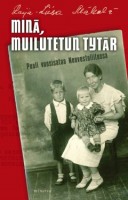 Minä, muilutetun tytär. Puoli vuosisataa Neuvostoliitossa
Minä, muilutetun tytär. Puoli vuosisataa Neuvostoliitossa
[Abductee’s daughter. Half a century in the Soviet Union]
Jyväskylä: Minerva, 2009. 321 p, ill.
ISBN 978-952-492-294-4
€ 24, hardback
During the period 1910-1930 many people defected from Finland to Russia/USSR both for political reasons and in the hope of better living standards. The labourite leader Yrjö Mäkelä was forcibly abducted across the border by the radical Finnish right-wing anti-Communist Lapua People’s Movement. Mäkelä’s fiancée also emigrated to the USSR, where the couple married and had two children. Raija-Liisa Mäkelä was born in Petrozavodsk, close to the Finnish border, in 1938, but never saw her father, who was interned in one of Stalin’s prisons and executed, although innocent. In the Soviet Union the Mäkelä family had both to carry the label of ‘enemy of the people’ and to endure majority (Russian) population’s antipathy towards Finns. The memoirs cover the family’s experiences from 1930 until 1990, when the author was able to move to Finland. In addition to providing evidence of remarkable survival skills, the book contains an interesting portrayal of Finnish widows and their families living in Petrozavodsk and nearby Sortavala.
Peter von Bagh: Sodankylä ikuisesti [Sodankylä forever]
11 June 2010 | Mini reviews, Reviews
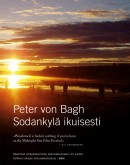 Sodankylä ikuisesti
Sodankylä ikuisesti
[Sodankylä forever]
Helsinki: WSOY, 2010. 308 p., ill.
ISBN 978-951-0-36290-7
€ 52, hardback
The Midnight Sun Film Festival is the world’s northernmost film festival. Held in Sodankylä, Lapland, it is now 25 years old. This scrapbook includes the text of speeches given by filmmakers as well as a wealth of material about the films shown over the years. Much of this material is based on the morning discussion panels which the festival’s director, film historian and author Peter von Bagh, has chaired with his guests. More than one hundred film directors, from Samuel Fuller to Wim Wenders, talk about the background and influences in their work. Von Bagh has constructed dialogues between directors who did not actually attend the same sessions; he calls these conversations – sometimes between the living and the dead – ‘heavenly dialogues’. The Festival was founded by Finnish film directors Aki and Mika Kaurismäki and Anssi Mänttäri in collaboration with the municipality of Sodankylä. The light summer nights and laid-back atmosphere at the festival delight the speakers and audience members every year. In the words of the American filmmaker D.A. Pennebaker, ‘Woodstock is fuckin’ nothing if you’ve been at the Midnight Sun Film Festival.’
Mirkka Lappalainen: Susimessu – 1590-luvun sisällissota Ruotsissa ja Suomessa [Wolf Mass. Civil war in Sweden and Finland in the 1590s]
4 June 2010 | Mini reviews
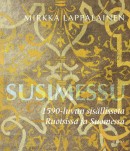 Susimessu – 1590-luvun sisällissota Ruotsissa ja Suomessa
Susimessu – 1590-luvun sisällissota Ruotsissa ja Suomessa
[Wolf Mass. Civil war in Sweden and Finland in the 1590s]
Helsinki: Siltala, 2009. 319 p.
ISBN 978-952-234-016-0
€32, hardback
Sweden at the end of the 16th century was riven by struggles for power: the opponents were the Protestant Duke Charles and Sigismund, King of Poland and Sweden, a strong supporter of the Counter-Reformation in the Nordic lands. A peasant uprising that came to be known as the ‘Cudgel War’ was underway in Finland – then part of the kingdom of Sweden. This book recounts the dramatic history of that civil war and, in line with current interpretive methods of historical research, explodes some popular myths that have been built up around these events. Mirkka Lappalainen has gained recognition as a bold writer who skilfully combines micro- and macro-level history. She characterises Sigismund, whom the Vatican supported to no avail, as a ‘melancholy, absent-minded vacillator, who preferred to play music.’ Lappalainen provides a fascinating alternative historical interpretation of what would have happened if the Vatican’s plans to wrest Finland away from Sweden and unite it with Poland had come to fruition.
Tapio Markkanen Paratiisista katsoen. Tähtitaivaan karttojen historiaa [Viewed from Paradise. A history of maps of the night sky]
4 June 2010 | Mini reviews
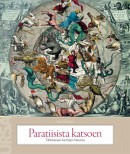 Paratiisista katsoen. Tähtitaivaan karttojen historiaa
Paratiisista katsoen. Tähtitaivaan karttojen historiaa
[Viewed from Paradise. A history of maps of the night sky]
Helsinki: Ursa (Astronomical Association), 2009. 143 p., ill.
ISBN 978-952-5329-80-3
€ 32, paperback
This book presents a scientific and cultural history of mapping the night sky, from ancient times up to the present day. In addition to the technical processes involved in producing celestial maps, it touches on a broad range of cultural connections, since the practice of mapping the heavens has always been inextricably linked with economic, cultural and political concerns throughout human history. How has mankind around the world experienced and comprehended the night sky? The title of this book refers to the ancient practice of portraying the skies the wrong way round – as a mirror image, as if viewed from heaven. ‘That’s how the gods would have seen it,’ the author, Professor Tapio Markkanen, an astronomer at the University of Helsinki, reminds us. This book was published in conjunction with an exhibition organised by the National Library of Finland as part of the International Year of Astronomy in 2009. Many of the maps reproduced in this book are from the Nordenskiöld Collection, housed in the National Library, and included in the UNESCO Memory of the World programme.
Sirpa Kivilaakso: Satukuningatar Anni Swan [Anni Swan, the queen of storytelling]
7 May 2010 | Mini reviews, Reviews
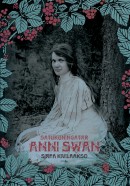 Satukuningatar Anni Swan. Elämä ja teokset
Satukuningatar Anni Swan. Elämä ja teokset
[Anni Swan, the queen of storytelling. Her life and works]
Jyväskylä: Atena, 2009. 275 p., ill.
ISBN 978-951-796-561-3
€ 32, hardback
Anni Swan (1875–1958) was a writer, translator and editor of children’s magazines. Her symbolic tales utilise her highly original language of sensory imagery. Swan’s symbolism is rooted in the golden age of Finnish arts at the end of the 19th century. The pre-eminent setting for Swan’s stories is the Finnish forest. Her ‘eco-criticism’ of practices that exploited the natural environment can be seen as radical for her time. Swan is also considered to be the first true writer of books for young people in Finland. Her stories about upper-class characters who overcome obstacles emphasise the class conflicts and other injustices of their day, yet they have remained popular into the 21st century. This book, based on Sirpa Kivilaakso’s doctoral thesis on Swan’s fairy-tale symbolism, presents a biography of the author, with supporting extracts from her books, diary entries and letters.
Mikko Ylikangas: Unileipää, kuolonvettä, spiidiä. Huumeet Suomessa 1800–1950 [Opium, death’s tincture, speed. Drugs in Finland 1800–1950]
29 April 2010 | Mini reviews, Reviews
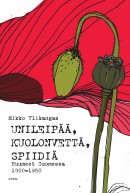 Unileipää, kuolonvettä, spiidiä. Huumeet Suomessa 1800–1950
Unileipää, kuolonvettä, spiidiä. Huumeet Suomessa 1800–1950
[Opium, death’s tincture, speed. Drugs in Finland 1800–1950]
Jyväskylä: Atena, 2009. 264 p., ill.
ISBN 978-951-796-578-1
€ 34, hardback
This book presents an account of the history of drugs in Finland, as well as changes in legal and illegal drug use. Even in the early 19th century, the authorities were concerned about opium abuse. Medical doctor Elias Lönnrot – best known for collecting the folk poems that make up the Kalevala, the Finnish national epic – coined the name ‘unileipä’, ‘the staff of dreams’, for opium. A period of prohibition of alcohol in the 1920s spurred a huge increase in the sale of cocaine; in the 1930s Finland led the Western world in consumption of heroin as a cough suppressant. In the late 1940s, the United Nations investigated why Finland, with a population of four million, consumed as much heroin in a year as other countries did over an average of 25 years. This was explained by the severity of wartime conditions: drugs were used to maintain battle readiness and to combat anxiety, sleeplessness and tuberculosis. Social problems caused by misuse did not, however, get out of control. This book was awarded a prize for the best science book of the year in Finland in 2009.
Ihmisten eläinkirja. Muuttuva eläinkulttuuri [The people’s book of animals. Our changing relationship with the animal kingdom]
22 April 2010 | Mini reviews, Reviews
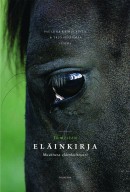 Ihmisten eläinkirja. Muuttuva eläinkulttuuri
Ihmisten eläinkirja. Muuttuva eläinkulttuuri
[The people’s book of animals. Our changing relationship with the animal kingdom]
Toimittaneet [Ed. by]: Pauliina Kainulainen & Yrjö Sepänmaa
Helsinki: Gaudeamus Helsinki University Press. 235 p., ill.
ISBN 978-951-570-786-4
€ 31, paperback
This book adopts a multidisciplinary approach in its examination of the relationship between humans and animals, highlighting historical, ethical and philosophical connections. The authors include humanists, theologians, anthropologists and artists. They address issues such as animal and nature conservation, animal breeding and husbandry, attitudes towards animals in myth and religion, and depictions of animals in Finnish art. Humans’ relationship to animals can hardly be said to have been consistent: in some religions, certain animals were worshipped as gods, whereas others viewed them as symbols of evil. We treat our pets as members of the family, while livestock animals are subjected to more and more cost-effective production methods. The architect Juhani Pallasmaa introduces readers to the master architects of the animal world and their highly refined, diverse architectural solutions, from which people have learnt a great deal.
Maritta Pohls & Annika Latva-Äijö: Lotta Svärd. Käytännön isänmaallisuutta [Lotta Svärd: practical patriotism]
1 April 2010 | Mini reviews, Reviews
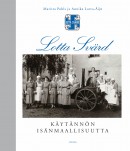 Lotta Svärd. Käytännön isänmaallisuutta
Lotta Svärd. Käytännön isänmaallisuutta
[Lotta Svärd: Practical patriotism]
Helsinki: Otava, 2009. 454 p., ill.
€ 46, hardback
Lotta Svärd was the name of the Finnish women’s voluntary military organisation, which performed auxiliary defence work between 1921 and 1944. It took its name from a character in a poem by the 19th-century Finnish writer J.L. Runeberg: Lotta Svärd accompanied her soldier husband to the front in the Finnish War of 1709. During the Winter and Continuation Wars (1939–1944), the ‘Lottas’ provided assistance to soldiers and took over men’s jobs, freeing them to go to the front. Around 40,000 Lottas assisted the Finnish army by performing maintenance and staff duties as well as air-raid monitoring. When the organisation was disbanded in 1944, it had some 300,000 members. As Lotta Svärd was ideologically an organisation for women emphasising home, nation and religion, it divided public opinion, and may still do so today. This book, which details the organisation’s history, work and people, is fourth and final volume in the history project on Lotta Svärd.
Konstnärsbröderna von Wrights dagböcker 1–7 [The diaries of the von Wright brothers, Vols. 1–7]
1 April 2010 | Mini reviews, Reviews
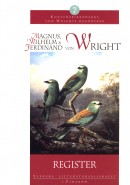 Konstnärsbröderna von Wrights dagböcker 1–7
Konstnärsbröderna von Wrights dagböcker 1–7
[The diaries of the von Wright brothers, Vols. 1–7]
Magnus von Wright: Dagbok [Diary] 1824–1834. 407 p., ill. ISBN 951-583-026-5
Magnus von Wright: Dagbok [Diary] 1835–1840. 470 p., ill. ISBN 951-583-040-0
Magnus von Wright: Dagbok [Diary] 1841–1849. 431 p., ill. ISBN 951-583-047-8
Magnus von Wright: Dagbok [Diary] 1850–1862. 496 p., ill. ISBN 951-583-060-5
Magnus von Wright: Dagbok [Diary] 1863–1868. 493 p., ill. ISBN 951-583-085-0
€ 46 each, hardback
Wilhelm & Ferdinand von Wright: Dagböcker [Diaries] 615 p., ill. ISBN 978-951-583-137-8.
€ 46, hardback
Index: 398 p., ill. ISBN 978-951-583-138-5. € 20, hardback
Helsinki: Svenska Litteratursällskapet i Finland, 1996–2010
Toimittaneet [Ed. by]: Anto Leikola, Juhani Lokki, Torsten Stjernberg, Johan Ulfvens
The three von Wright brothers, who came from a family with nine children in rural north Savo (in eastern Finland), shared a talent for meticulous observation combined with masterful technique and a romantic style. Each of these artists, who were active during the Biedermeier era, was a trailblazer in his own field: Magnus (1805–1868) as a proponent of Finnish national art, Wilhelm (1810–1887) as a wildlife illustrator, and Ferdinand (1822–1906) as a painter of landscapes and birds. Their contribution to Nordic ornithology is considerable. The index volume to the von Wright brothers’ diaries (which were written in Swedish) includes lists of their artworks and details of works held by collections abroad. This series is of significant cultural importance, and it is remarkable for its scientific accuracy. Five volumes consist of Magnus von Wright’s diary entries, which he wrote daily from 1820 up until his death. The sixth volume contains diary entries by the two younger brothers, which provide insights into the everyday life and society of that era, as well as the artists’ working practices and their relationship with nature.
Max Engman: Pitkät jäähyväiset [The long farewell]
18 March 2010 | Mini reviews, Reviews
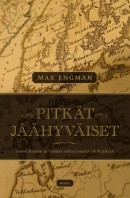 Pitkät jäähyväiset. Suomi Ruotsin ja Venäjän välissä vuoden 1809 jälkeen
Pitkät jäähyväiset. Suomi Ruotsin ja Venäjän välissä vuoden 1809 jälkeen
[The long farewell. Finland between Sweden and Russia after 1809]
Helsinki: WSOY, 2009. 239 p.
ISBN 978-951-0-34880-2
€ 36, hardback
In the aftermath of the Finnish War fought between Russia and Sweden in 1809, Finland was passed from Sweden to Russia. Finland’s political origins can be traced back to the autonomous status of a Grand Duchy in the Russian Empire, granted at that time. Historian Max Engman, a professor at Åbo Akademi, examines this process of separation. Along with the immediate consequences of the war and government reforms, he investigates Finland’s ideological distancing from Sweden and its period of ‘russification’. Engman provides a favourable view of the relations between the Russian Empire and Finland in the 19th century: the Russians were quite surprised by the Finns’ organisational skills as their autonomy increased. Finns’ remarkable loyalty towards their new motherland is explained as both a genuine feeling and a matter of political expediency. Finland quickly began to drift away from Sweden, and Finland’s previous mother country began to seem provincial when compared to St Petersburg. Max Engman has published several studies on the breakup of empires and on Finnish identity, particularly in relation to Russia.
Erkki Lampén: Neljä retkeä läpi Suomen [Four trips across Finland]
15 March 2010 | Mini reviews, Reviews
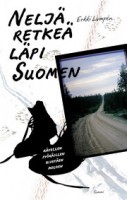 Neljä retkeä läpi Suomen. Kävellen – pyöräillen – hiihtäen – meloen
Neljä retkeä läpi Suomen. Kävellen – pyöräillen – hiihtäen – meloen
[Four trips across Finland. On foot – by bicycle – on skis – by kayak]
Helsinki: Tammi, 2009. 272 p., ill.
ISBN 978-951-31-4988-8
€ 25, hardback
In the spring of 2000, a downbeat 40-year-old man sat musing on the meaning of life when an idea suddenly came to him: why not walk from Helsinki to the Arctic Ocean? In his diary of this trek, which covered more than seven weeks and over a thousand kilometres, the journalist and writer Erkki Lampén describes the landscape, people, events and his own thoughts along the journey. Lampén made another three journeys (in 2003, 2004 and 2006) travelling by bicycle, on skis and by kayak, sleeping in a tent, in rustic cabins, in motels and hotels. His circular cycle journey aimed to follow Finland’s national borders as closely as possible; on skis he covered the distance from Porvoo on the south coast to Utsjoki in the far north; he then paddled his kayak from Lapland to the Gulf of Finland (this journey required plenty of wheeling the vessel from one river or lake to another). Lampén’s diary entries convey an entertaining blend of a realistic battle for survival, philosophising, joy, fury and humour.
Eero ja Saimi Järnefeltin kirjeenvaihtoa ja päiväkirjamerkintöjä 1889–1914 [Eero and Saimi Järnefelt: Correspondence and diary entries, 1889–1914]
12 March 2010 | Mini reviews, Reviews
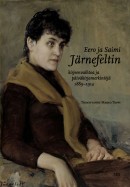 Eero ja Saimi Järnefeltin kirjeenvaihtoa ja päiväkirjamerkintöjä 1889–1914
Eero ja Saimi Järnefeltin kirjeenvaihtoa ja päiväkirjamerkintöjä 1889–1914
[Eero and Saimi Järnefelt: Correspondence and diary entries, 1889–1914]
Toim. [Ed. by] Marko Toppi
Helsinki: Suomalaisen Kirjallisuuden Seura, 2009. 403 p., ill.
ISBN 978-952-222-113-1
€ 38, hardback
The actress Saimi Swan (1867–1944) and painter Eero Järnefelt (1863–1937) were both born into prominent Finnish families united by similar creative and cultural ideals. The book consists mainly of correspondence between the couple, beginning with their engagement in 1890, and their diary entries up to 1914. Eero Järnefelt’s letters from Paris and Rome provide fascinating glimpses into personal relationships, discussions on artistic practices and aims, and political movements from the golden era of Finnish art. Saimi Järnefelt’s letters illuminate the conflict she experienced between her career and family life. She had to keep her engagement secret in order to safeguard her career; once married, Saimi Järnefelt left the theatre. In letters written to her sister-in-law Aino Sibelius – the wife of composer Jean Sibelius – Saimi Järnefelt often described the cycle of the seasons in her garden: gardening was a hobby the two women shared, in which their need for self-expression could find an outlet.
Juha Maasola: Kirves [The axe]
4 March 2010 | Mini reviews, Reviews
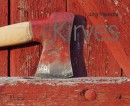 Kirves
Kirves
[The axe]
Helsinki: Maahenki, 2009. 207 p., ill.
ISBN 978-952-5652-74-1
€ 44, hardback
This book by Juha Maasola, a forestry protection officer, provides an economic, cultural and social history of the axe from prehistoric times to the present day. The axe was the sole implement used for felling trees in Finland up until the turn of the 20th century. Most Finnish men still know how to chop their own wood for the sauna, while one axe model produced by Fiskars has won awards for outstanding product design. This impressively illustrated work also explains the techniques and history of forestry and logging. In the 1940s, wartime ‘woodcutting bees’ united the Finnish nation, with women picking up their axes and joining in. Buildings have traditionally been constructed from wood, and builders had to be handy with a hatchet. This skill gave carpenters their name in Finnish: kirvesmies – literally, ‘axeman’. A list of over 300 Finnish-language terms meaning ‘axe’, gleaned from the archives of the Research Institute for the Languages of Finland, is included. The book concludes with a look at portrayals of the use of axes in Finnish literature, film and art.
Minä, Mauri Kunnas [I, Mauri Kunnas]
4 March 2010 | Mini reviews, Reviews
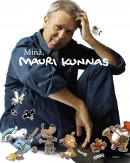 Minä, Mauri Kunnas
Minä, Mauri Kunnas
[I, Mauri Kunnas]
Muistiin merkitsi [As told to] Lotta Sonninen
Helsinki: Otava, 2009. 182 p., ill.
ISBN 978-951-1-23186-8
€ 40, hardback
Mauri Kunnas (born 1950) is a cartoonist and graphic artist. His children’s books have been translated into 28 languages; the translations have sold approximately 2,5 million copies. His anthropomorphic canine characters from Koiramäki, Doghill, are well known for their adventures in historical milieus; researching these settings is one of Kunnas’ passions. His reinterpretations of Finnish literary classics are also popular: The Canine Kalevala and Seven Dog Brothers offer affectionately humorous homages to the Kalevala, the Finnish folk epic, and the classic novel by Aleksis Kivi. Joulupukki (1981), published in English as Santa Claus, is arguably the world’s best-known Finnish children’s book. In this book, Kunnas gives a lively account of his childhood and youth, as well as his influences and the different phases of his career as an illustrator. The text is complemented by photos from Kunnas’ family album and his own archives, from adventure stories he illustrated as a boy to a pair of hippy bell-bottomed jeans adorned with doodles.
Anu Lahtinen: Pohjolan prinsessat. Viikinkineidoista renessanssiruhtinattariin [Princesses of Pohjola. From Viking maidens to Renaissance princesses]
22 February 2010 | Mini reviews, Reviews
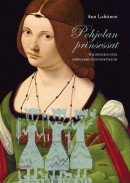 Pohjolan prinsessat. Viikinkineidoista renessanssiruhtinattariin
Pohjolan prinsessat. Viikinkineidoista renessanssiruhtinattariin
[Princesses of Pohjola. From Viking maidens to Renaissance princesses]
Jyväskylä: Atena, 2009. 223 p., ill.
ISBN 978-951-796-595-8
€ 33, hardback
This book, a side project to Anu Lahtinen’s doctoral dissertation, tells of the women of the Nordic royal families from the 7th to the 17th centuries. The term ‘princesses’ is used here to refer to female members of ruling families who did not hold positions of power themselves. With its brief biographies of people who have long remained hidden in the historical shadow of great men, this book sheds light on a little-researched subject. Many princesses of the medieval Swedish, Danish and Norwegian realms grew up into significant political figures; they needed cunning, a good command of languages and even fighting skills in order to survive the tumults of that age. The rollicking parties and romantic escapades of Cecilia, one of the five daughters of King Gustav Vasa of Sweden, are reminiscent of the ‘party princesses’ of our own time. A Viking-era princess, Alfhild, became a pirate captain; according to medieval tales, she disguised herself as a man and managed to lead a crew of female pirates in a number of raids along the shores of the Baltic.
